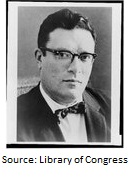What do you think of symbolism in writing? Most of us have been through English (Language Arts) classes where the teacher encouraged us to find symbols in some of the great works of literature. This is a bit of a stretch for high school students, but school is all about stretching young minds, isn’t it? Some of us had the unfortunate experience of guessing at a symbol and being told we were wrong.
This raises several questions. Should writers use symbolism? If they do, and readers detect and interpret the symbols correctly, does that enhance the reading experience? If a reader picks up on a symbol the writer didn’t intend, is the reader wrong?
This site lists some of the more common symbols and what they often mean. But almost anything tangible can serve as a symbol, as long as it relates to the plot, gives added meaning to the story, and is appropriate for the thing (usually something intangible) it’s symbolizing.
Here, writer John T. Reed makes the case that the exercise of looking for symbolism is silly, and no more than a parlor game. The essay is persuasive, and he argues writers should strive for clarity, not make it a struggle for readers to decode hidden meanings. Moreover, he says those who seek symbolism often find things unintended by the author.
 In Isaac Asimov’s essay on symbolism, he wrote, “When I complained to someone who worked up a symbolic meaning of my story ‘Nightfall’ that made no sense to me at all, he said to me, haughtily, ‘What makes you think you understand the story just because you’ve written it?’… Sometimes it is quite demonstrable that an author inserts a deeper symbolism than he knows-or even understands.”
In Isaac Asimov’s essay on symbolism, he wrote, “When I complained to someone who worked up a symbolic meaning of my story ‘Nightfall’ that made no sense to me at all, he said to me, haughtily, ‘What makes you think you understand the story just because you’ve written it?’… Sometimes it is quite demonstrable that an author inserts a deeper symbolism than he knows-or even understands.”
An intriguing exchange. Authors have to remember that written storytelling is a curious form of human communication. The purpose of communication is to convey information from one human mind to another. But storytelling is one-way only: writer to reader. The writer need not even be alive any more, and often isn’t. The reader’s enjoyment of a story is a personal, internal experience, without any possibility (usually) of asking for clarification or explanation.
Therefore, it seems to me readers get to decide what symbolism they discover in a story, and no one should say they’re wrong. Not English teachers, and not even the author.
As to whether writers should intentionally use symbolism in their stories, that’s a question for each author to decide. I’ve used symbolism purposefully in some of my stories, and not  in others. In “The Wind-Sphere Ship,” the human eye symbolizes the future, whether it’s the large eyes of Heron’s friend Praxiteles or the painted eyes on the Greek ships. In “The Vessel,” the circle symbolizes the old unity of the previous Atlantean culture, but the ceramic drinking flagon symbolizes the attempt to preserve and spread that culture to other, more primitive societies.
in others. In “The Wind-Sphere Ship,” the human eye symbolizes the future, whether it’s the large eyes of Heron’s friend Praxiteles or the painted eyes on the Greek ships. In “The Vessel,” the circle symbolizes the old unity of the previous Atlantean culture, but the ceramic drinking flagon symbolizes the attempt to preserve and spread that culture to other, more primitive societies.
One of my favorite uses of symbolism is in Jules Verne’s novel The Mighty Orinoco, which involves a mission to find the source of the river Orinoco. Finding the sources of rivers was a major 19th century geographical pursuit. One of the main characters on the mission is also seeking his father, lost somewhere along the river. Note the symbolic parallel between the river’s source and the source of one’s own life.
In closing, I think it was Sigmund Freud who reminded us, “sometimes a cigar is just a cigar,” but I suspect Groucho Marx would have replied, “Just?” I’d love to hear your thoughts on the use of symbolism in fiction, so feel free to leave a comment for–
Poseidon’s Scribe
